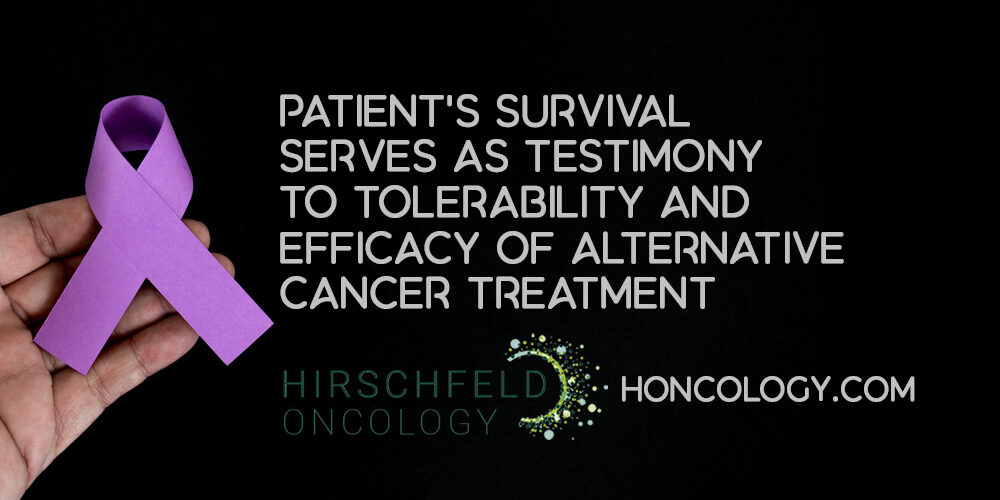Targeted therapy is designed to be incredibly precise, but side effects can still happen. The reason is that some of our healthy cells can share molecular markers or pathways that the drugs are built to attack. Even though these treatments are much more specific than traditional chemotherapy, this overlap can cause some "collateral damage."
This is why we see side effects like skin rashes, diarrhea, or high blood pressure—they're often linked directly to the specific job the drug is doing. The exact side effects you might experience will depend entirely on the drug and its unique molecular target.
How Targeted Therapy Works and Why Side Effects Happen
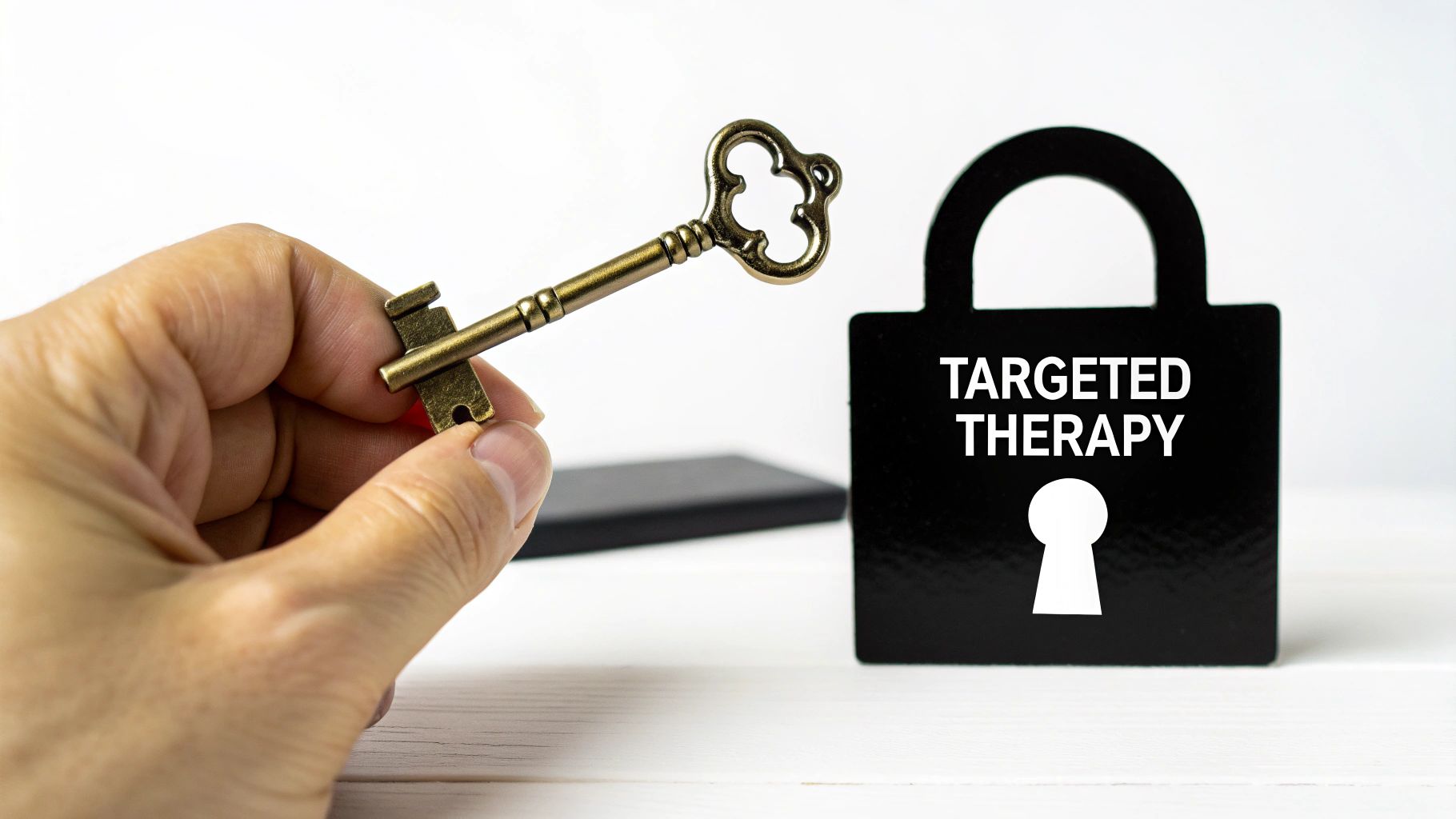
To really get a handle on the side effects, it helps to first understand the treatment's strategy. Old-school chemotherapy is a bit like a sledgehammer, hitting all fast-growing cells in the body—cancer and healthy alike. Targeted therapy, on the other hand, is more like a guided missile. It’s engineered to go after specific molecules, or “targets,” that cancer cells depend on to grow and spread.
Think of a cancer cell as a car with the gas pedal jammed to the floor, causing it to speed out of control. A targeted therapy drug is designed to find that specific car and do something very precise, like cutting the fuel line or blocking the ignition, to stop it in its tracks. All the other normal, well-behaved cars on the road are largely left alone.
The Source of Side Effects
So, if these drugs are so smart, why do they still cause problems? It comes down to a concept we call "on-target, off-tumor" effects. This simply means the drug is hitting the exact molecular target it was designed for, but that target also happens to exist on some of your normal, healthy cells.
A classic example involves a target called the Epidermal Growth Factor Receptor (EGFR). It’s often overactive in certain cancers, driving their growth. An EGFR inhibitor drug does a great job of blocking this signal on the cancer cells. However, EGFR is also crucial for the normal function of your skin and hair follicles. When the drug blocks EGFR there, too, you get the tell-tale skin rash and hair changes that are so common with these medications. The drug isn't failing; it's working perfectly, just not exclusively on the tumor.
The key takeaway is that targeted therapy side effects are often a sign the medication is doing its job by hitting its designated molecular pathway. The challenge is that this pathway isn't always exclusive to cancer cells.
Key Types of Targeted Therapies
While hundreds of these drugs exist, they generally fall into two broad categories based on how they reach their target:
- Small-Molecule Drugs: As the name suggests, these are tiny enough to get inside a cell and disrupt targets within it. Picture them as master keys that can unlock the cell's door and shut down the machinery inside.
- Monoclonal Antibodies: These are much larger proteins made in a lab. They're too big to get into cells, so they work on the surface. They act like a clamp on the outside of a cancer cell, blocking it from receiving growth signals or flagging it for destruction by the immune system.
Knowing how your specific treatment works is the first step in understanding and managing its potential side effects. To dive deeper into the different approaches, you can learn more about targeted therapy and see how it’s customized for each person’s cancer.
Common Side Effects and What They Feel Like
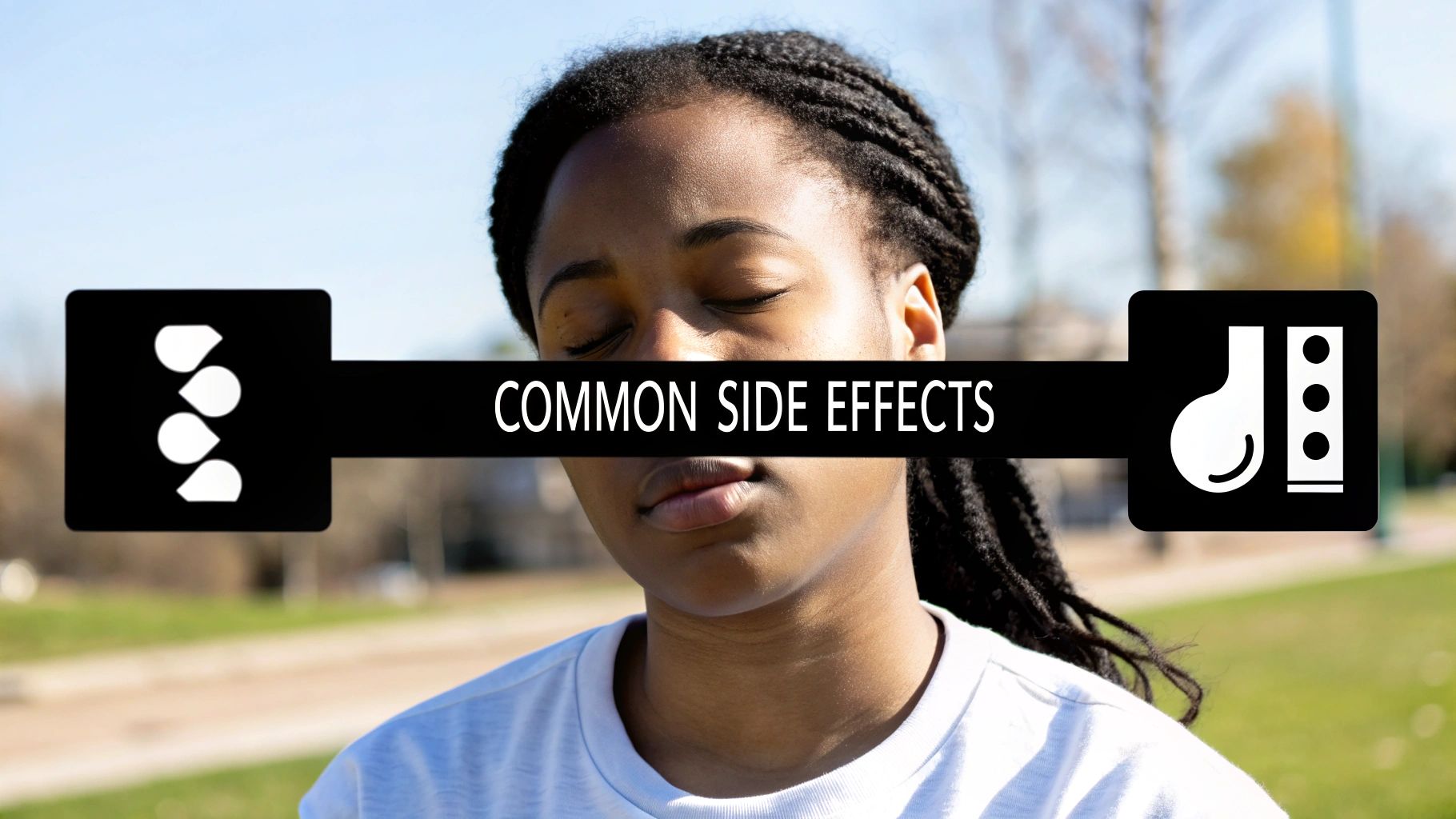
Knowing what to expect from targeted therapy side effects is the first step toward feeling in control of your treatment. Unlike the broader effects of traditional chemo, the side effects of targeted therapies are often a direct result of the drug doing its job. They aren't random; they’re a consequence of the drug blocking a specific molecular pathway in both cancer cells and healthy cells that happen to use that same pathway.
Think of it as a clue about how the treatment is working. This section is a practical guide to what you might experience, organized by the parts of the body most commonly affected.
Skin, Hair, and Nail Changes
One of the first places you might notice changes is on your skin. This is incredibly common, and it makes sense when you think about it. Many of the growth pathways these drugs target, like the EGFR pathway, are also crucial for the health and rapid turnover of our skin, hair, and nail cells.
You might see an acne-like rash pop up on your face, chest, or back, which can feel itchy or sore. Many people also struggle with intensely dry, cracking skin, especially on the hands and feet. Your nails can become brittle, grow more slowly, or you might develop painful inflammation around the nail beds. These dermatologic changes often appear gradually over the first few weeks of treatment.
While nearly everyone on certain targeted drugs will experience some skin issue, the exact symptoms can vary. You can get more information from the American Cancer Society, which explains these diverse effects in detail.
Digestive System Discomfort
Your digestive system is another area that can be sensitive to these drugs. The cells lining your gut are constantly renewing themselves, and when a targeted therapy disrupts that process, you’re likely to feel it.
The most frequent complaint is diarrhea, which can range from a minor inconvenience to a serious problem if it leads to dehydration. Others may deal with waves of nausea or a complete loss of appetite. Some drugs can also cause painful mouth sores, a condition called mucositis, that makes eating and even talking a real challenge.
It's crucial to report any digestive changes to your care team right away. Diarrhea, in particular, can lead to dehydration and electrolyte imbalances if not managed proactively. Your doctor has effective strategies to help control these symptoms.
A few simple steps can make a big difference:
- Stay Hydrated: Sip on water, clear broths, or electrolyte drinks throughout the day.
- Adjust Your Diet: Try eating smaller, more frequent meals. Avoiding spicy, greasy, or high-fiber foods can give your system a break.
- Gentle Oral Care: Use a very soft toothbrush and steer clear of alcohol-based mouthwashes to protect your mouth from sores.
Systemic Effects Like Fatigue and Fever
Beyond specific organs, targeted therapies can cause more generalized, whole-body symptoms. Fatigue is probably the most universal side effect of any cancer treatment, and these drugs are no different. This isn’t just feeling tired after a long day; it’s a profound exhaustion that rest doesn’t seem to fix.
Some therapies, especially BRAF and MEK inhibitors, are known for causing fevers, chills, and other flu-like symptoms. While it can be unsettling to spike a fever, it’s often a predictable and manageable part of the treatment cycle. Your oncology team will give you clear instructions on when to monitor your temperature and when to call them.
Effects on Other Organs and Body Systems
While less common, some targeted drugs can affect other vital organs. It’s important to know about these possibilities, not to cause worry, but so you understand why your care team is monitoring you so closely.
The table below gives a quick overview of how different body systems can be impacted. It's a helpful reference for understanding the "why" behind some of the monitoring tests your doctor might order.
Common Side Effects and Affected Body Systems
Your oncologist knows the specific risk profile of the drug you’re taking and will build a monitoring plan just for you. This could include regular blood pressure checks, blood tests to keep an eye on organ function, or even an echocardiogram to check on your heart. By staying ahead of potential targeted therapy side effects, we can manage them before they become serious problems, keeping you on track with your treatment.
Connecting Side Effects to Your Specific Treatment
Not all targeted therapies are the same, and neither are their side effects. The specific symptoms you might face are tied directly to the unique biological "lock" your medication is designed to fit. Understanding this connection is the first step toward creating a personalized roadmap of what to expect from your treatment.
Instead of just handing you a long, generic list of possibilities, we can get much more specific. By grouping common targeted therapy side effects by the class of drug causing them, we can better understand why you might be feeling a certain way. This empowers you to have much more focused and productive conversations with your oncologist.
EGFR Inhibitors: The Skin Connection
One of the most common families of targeted therapy is the EGFR inhibitors. These drugs are designed to block a protein called the Epidermal Growth Factor Receptor, which can act like a gas pedal for certain cancers, especially in the lungs and colon. But EGFR also plays a huge role in keeping your skin and hair follicles healthy.
When the drug blocks this pathway in cancer cells, it also disrupts the normal life cycle of your skin cells. This often leads to an acne-like rash, usually on the face, chest, and back. While it can be frustrating, this rash can sometimes be a good sign that the treatment is hitting its mark. You might also notice intensely dry skin, brittle nails, or inflammation around your nail beds.
VEGF Inhibitors: The Blood Vessel Blockers
Another major class of drugs is the VEGF inhibitors. These work by blocking a signal that tumors send out to grow new blood vessels—a process called angiogenesis. Think of it like cutting off the supply lines to an enemy camp; the treatment essentially starves the tumor.
But VEGF is also important for maintaining the health of blood vessels all over your body. Blocking it can naturally lead to side effects related to your circulatory system. The most common one we see is hypertension, or high blood pressure. This is why your care team will monitor your blood pressure so closely—keeping it in a safe range is a key part of your treatment plan.
A comprehensive 2022 review in Nature really drove this point home. Researchers noted that while general side effects like fatigue can pop up with many treatments, others are incredibly distinct. For instance, that acne-like rash is a hallmark of anti-EGFR therapies, while high blood pressure is a frequent sign of anti-VEGFR agents. You can dive into the full findings on therapy-specific side effects from the study.
BRAF and MEK Inhibitors: The Fever and Pain Link
For certain types of melanoma and a few other cancers with specific genetic mutations, we often use a combination of BRAF inhibitors and MEK inhibitors. These drugs hit two different spots in a key cancer-growth pathway, delivering a powerful one-two punch against the tumor.
This combination also comes with a unique set of side effects. It’s not uncommon for patients to experience recurring fevers, chills, and other flu-like symptoms. Joint pain (arthralgia) and muscle aches are also fairly common. While these symptoms can be unsettling at first, they’re often predictable, and we have well-established ways to manage them with supportive medications or by making small adjustments to your dose.
Let’s break that down:
- EGFR Inhibitors: Primarily affect the skin, causing rashes and dryness.
- VEGF Inhibitors: Mainly impact the cardiovascular system, often leading to high blood pressure.
- BRAF/MEK Inhibitors: Often cause systemic effects like fevers, chills, and joint pain.
Knowing Your Treatment’s Fingerprint
Knowing which class of drug you are taking gives you a powerful lens to understand what’s happening in your body. A side effect is no longer just a random event; it becomes a logical consequence of your medicine’s very specific job. This knowledge helps you anticipate what might come up and, just as importantly, helps you describe it clearly to your care team.
It’s also crucial to remember that these mechanisms are very different from other modern cancer treatments. For instance, targeted therapy and immunotherapy are both incredible advances, but they work in fundamentally different ways. You can get a clearer picture in our guide explaining what immunotherapy for cancer is and see how its side effects are completely distinct. Your therapy is one specific tool in a large and growing oncology toolkit.
The Typical Timeline for Side Effects
One of the first questions on everyone's mind when starting a new treatment is, "When will I start to feel this?" With chemotherapy, the side effects can feel almost immediate. But targeted therapies play by a different set of rules, and their timeline can be much more spread out.
Understanding when certain side effects might show up helps turn that feeling of uncertainty into a proactive plan. It gives you back a sense of control. The timing isn't random—it's tied directly to how the drug works and the life cycle of the cells it targets. Some effects pop up quickly, while others take weeks or even months of steady treatment to appear.
This timeline gives you a bird's-eye view of when different side effects tend to emerge, from the initial skin issues to things we watch for months down the road.
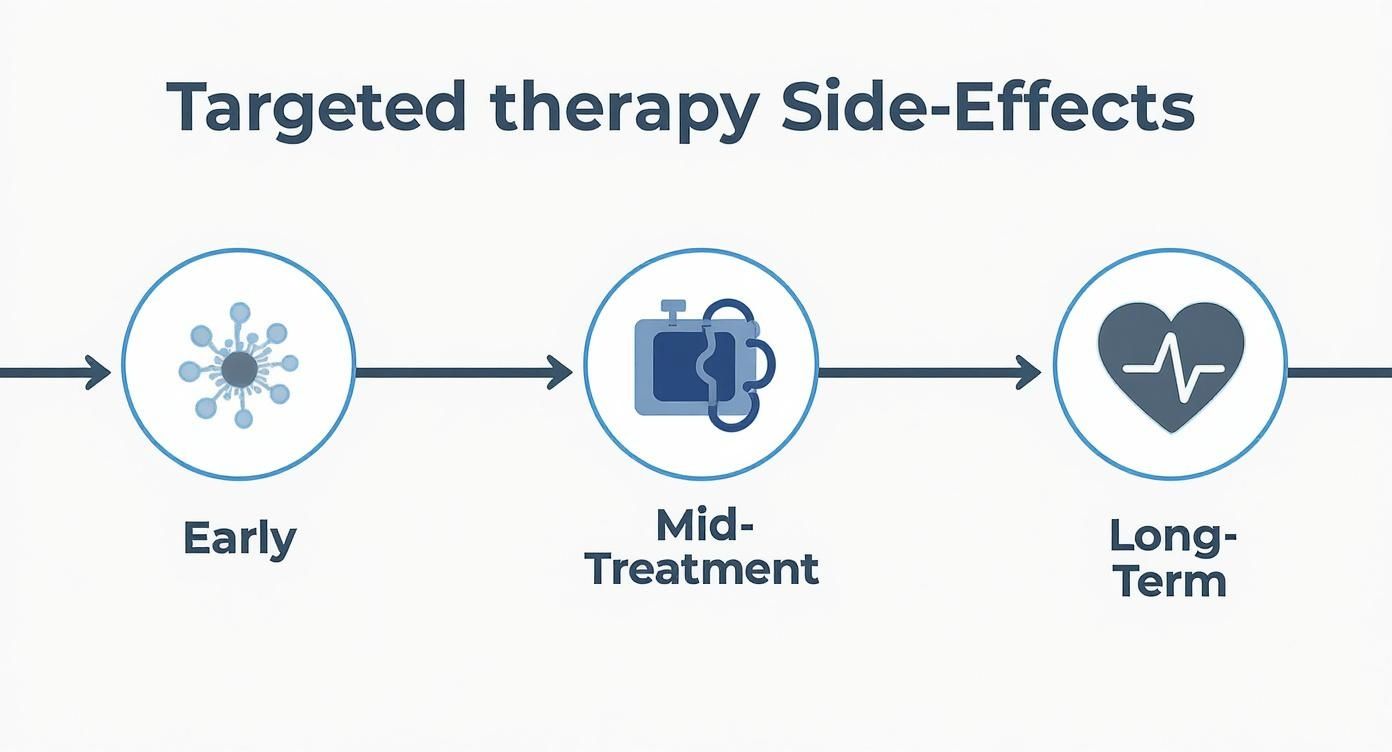
As you can see, your experience is a progression. Different symptoms may take center stage at various points in your treatment journey.
In the First Few Weeks
During the initial phase of treatment, you’re most likely to see side effects impacting cells that turn over quickly, like the ones in your skin and the lining of your digestive system.
- Skin Reactions: For anyone taking an EGFR inhibitor, an acne-like rash is often one of the earliest signs that the medicine is doing its job. This typically appears within 1 to 3 weeks. You might also notice dry skin or an itchy scalp starting around the same time.
- Digestive Issues: Nausea or diarrhea can begin within the first couple of weeks as your gut gets used to the new medication.
These early effects are usually a sign that the drug is hitting its target, which just happens to be present on these healthy cells, too. The good news is that they are almost always manageable when we address them right away.
Months Into Treatment
As your body gets accustomed to the therapy, a different set of side effects might develop or become more prominent. These often reflect the cumulative impact of the drug on your body's systems over time.
For example, some issues that build up include:
- High Blood Pressure: With drugs that block VEGF, hypertension doesn't usually happen overnight. It can take 4 to 8 weeks or longer to develop, which is precisely why we monitor your blood pressure so regularly.
- Fatigue: While you might feel tired early on, that deep, persistent fatigue often builds over the first few months.
- Hand-Foot Skin Reaction: This condition, which causes redness, swelling, and pain on the palms and soles, can appear after you’ve already had several cycles of treatment.
It’s critical to remember that having (or not having) a particular side effect doesn't necessarily tell us how well the treatment is working against the cancer. Everyone's body is different, and we rely on scans and other objective tests to measure a therapy's success.
Long-Term Monitoring and Cumulative Effects
For some targeted therapies, we need to keep a close eye on potential long-term impacts on organs like the heart, lungs, or thyroid. While less common, watching for these changes is a crucial part of keeping you safe.
Your oncology team will have a set schedule for blood work or imaging to catch any shifts early, long before they could become a problem. This is why sticking to your follow-up appointments is so important, even on the days you're feeling great. It’s all part of the plan.
Your Toolbox for Managing Treatment Side Effects
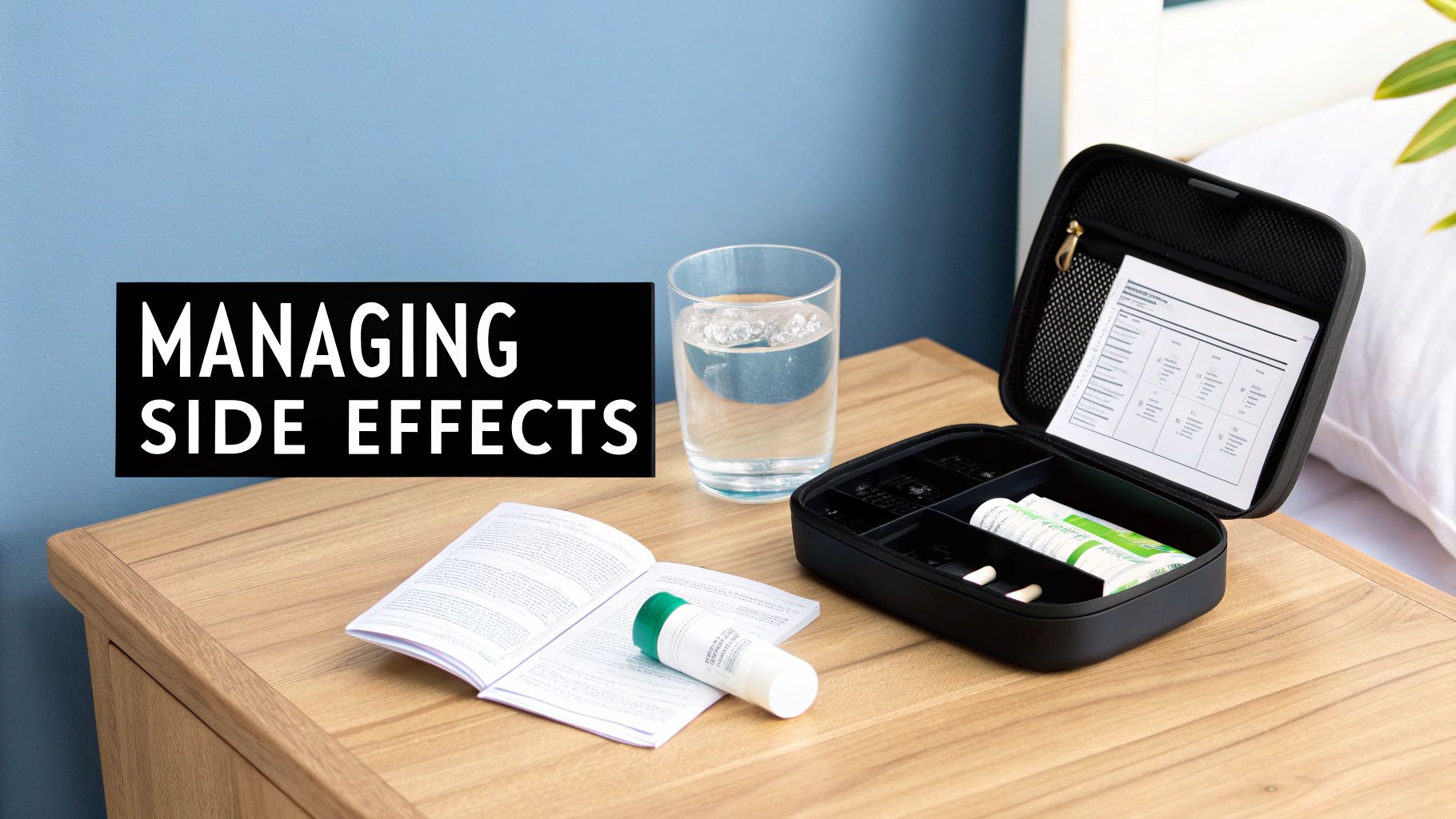
Dealing with targeted therapy side effects isn't something you just have to endure. It's an active part of your treatment, and you and your care team can manage it together. Think of this as your personal toolbox, packed with practical strategies to help you maintain your quality of life.
The best approach is a partnership. We combine medical support from your oncology team with proactive things you can do at home. The goal is always to find that sweet spot—keeping the therapy working hard against the cancer while minimizing its impact on your daily life.
Medical Support From Your Oncology Team
Your first and most important resource is always your medical team. Don't ever hesitate to report a new or worsening symptom, no matter how small it might seem. We have a whole range of medical interventions that can bring significant relief, but we can't help if we don't know what's going on.
These are just a few examples of how we can step in:
- For Skin Rashes: Depending on how severe it is, your doctor might prescribe a topical steroid cream, an oral antibiotic that also reduces inflammation, or a special medicated moisturizer to soothe irritated skin.
- For Diarrhea: The over-the-counter options often don't cut it. Your oncologist can prescribe much stronger anti-diarrheal medications and give you clear instructions on how to use them safely and effectively.
- For High Blood Pressure: If your targeted therapy is known to cause hypertension, we'll monitor you closely. We can easily prescribe blood pressure medications to keep your numbers in a safe and healthy range.
- For Nausea: Modern anti-nausea medications are incredibly good at what they do. Your doctor can give you a prescription to prevent nausea before it even has a chance to start.
Open communication is the single most powerful tool you have. The sooner your team knows what you're experiencing, the faster we can find a solution. You never have to just "tough it out"—managing side effects is a fundamental part of your cancer care plan.
Proactive At-Home Strategies
Beyond the pharmacy, there are so many simple things you can do at home to feel better. These daily habits can make a huge difference in how well you tolerate your therapy, forming a foundation of support for your body.
Just be sure to run these strategies by your care team first. They can give you personalized advice that makes sense for your specific treatment and overall health.
Gentle Skincare Routines
Because so many of these drugs affect the skin, a gentle care routine is non-negotiable. The idea is to protect your skin’s natural barrier and keep irritation at bay.
- Use Lukewarm Water: Super hot showers and baths feel nice, but they strip your skin of its protective oils, which can make dryness much worse.
- Choose Mild, Fragrance-Free Products: Look for soaps, cleansers, and lotions made for sensitive skin. Anything with alcohol is a no-go.
- Moisturize Liberally: Slather on a thick, alcohol-free cream or ointment right after you bathe and throughout the day. Pay special attention to your hands and feet.
- Protect Yourself from the Sun: Your skin is going to be extra sensitive. Use a broad-spectrum sunscreen with SPF 30 or higher and wear protective clothing whenever you head outside.
Simple Dietary Adjustments
What you eat can have a direct and immediate impact on digestive side effects like diarrhea or nausea. For instance, sticking to bland, low-fiber foods like bananas, rice, and toast—the old BRAT diet—can really help settle your system during a bout of diarrhea. Many of the same principles apply here as they do for traditional chemo, so you can find more great ideas in our guide to the best foods for chemotherapy patients.
Staying hydrated is also absolutely critical, especially if you're dealing with diarrhea or fatigue. Keep a water bottle handy and sip on water, clear broths, or electrolyte drinks all day long. These small, consistent efforts are powerful tools on your treatment journey.
Knowing When to Call Your Doctor
Navigating the side effects of targeted therapy can be one of the most confusing parts of treatment. You're never alone in this, and you shouldn't have to guess when a symptom needs a professional opinion.
To take the guesswork out of it, we use a simple "Green-Yellow-Red" light system. This is a straightforward framework that helps you and your caregivers know when to stick with at-home care, when to give our office a call, and when it's time for immediate medical attention.
Green Light Symptoms
Think of these as minor issues that you can typically handle with the strategies we’ve already discussed. They're noticeable but don't stop you from going about your day.
- Mildly dry skin: The kind that feels better with consistent moisturizing.
- Low-grade fatigue: Feeling a bit more tired than usual, which often improves with rest and good hydration.
- Occasional loose stool: An isolated episode that isn't persistent or severe.
Yellow Light Symptoms
These symptoms are a clear signal to slow down and check in with us. While they aren't usually emergencies, they are more disruptive and persistent, telling us we might need to adjust your care plan.
- A skin rash that’s spreading, becoming itchy, or painful even after using creams.
- Diarrhea that happens more than 3-4 times a day or isn't getting better with diet changes.
- A persistent low-grade fever that just won't break, or a noticeable loss of appetite.
Red Light Symptoms
These are serious signs that require you to stop what you're doing and get help immediately. Call 911 or go to the nearest emergency room if you experience any of the following:
- Sudden chest pain or severe shortness of breath.
- A high fever, which we define as 100.4°F (38°C) or higher.
- Severe abdominal pain or signs of dehydration like dizziness, confusion, or not urinating for many hours.
- Any bleeding that you can't get under control.
Even though targeted therapies are often easier to handle than traditional chemotherapy, serious reactions can and do happen. A comprehensive review identified 253 cases where patients required intensive care due to toxicities from these drugs, which really highlights why prompt action is so critical. You can read more about these findings on severe targeted therapy reactions.
The bottom line is this: never hesitate. If a symptom feels serious, trust your gut and get in touch. Acting early is one of the most important things you can do for your own safety.
Your Top Questions Answered
When you're starting a new treatment, questions are bound to come up. It's completely normal. Here, we'll tackle some of the most common things patients ask about the side effects of targeted therapy, giving you clear, straightforward answers to help you feel more in control.
Do Side Effects Mean the Therapy Is Working?
This is one of the most frequent—and smartest—questions we hear. The answer isn't a simple yes or no, because it really depends on the specific drug. For some treatments, like EGFR inhibitors, studies have shown that developing a skin rash can be a sign that the drug is hitting its target effectively.
But this is the exception, not the rule. You should never assume the treatment isn't working just because you feel fine. The absence of side effects does not mean your therapy is failing. We measure success with hard evidence, like imaging scans and lab work, not by how you feel day-to-day.
Can I Use Over-the-Counter Products for My Symptoms?
Please, always check with us first. It's incredibly important that you talk to your oncology team before taking or using anything new—that includes common pain relievers, vitamins, herbal supplements, and even certain lotions or creams.
So many everyday products can interact with your cancer treatment in unexpected ways. Some might reduce the therapy's effectiveness, while others could actually make side effects worse. We can give you a list of approved, safe products for your specific situation, from the right kind of moisturizer to gentle anti-diarrhea medications. Just ask.
The most important takeaway is that your care team is your partner. We've heard these questions before and have evidence-based answers to guide you safely through your treatment.
Will These Side Effects Be Permanent?
For the vast majority of people, side effects from targeted therapy are temporary. Most issues—like skin changes, fatigue, or digestive problems—will fade away after you finish your treatment. Your body has an amazing capacity to recover once the medication is stopped.
That said, in some rare cases, certain drugs can cause lasting changes to organs like the heart or lungs. This is precisely why we monitor you so closely with regular check-ups and tests. We're always on the lookout for these risks and will discuss any potential for long-term effects with you before you even start, so you know exactly what to expect.
At Hirschfeld Oncology, we believe that managing side effects proactively is just as important as the treatment itself. Open communication is central to how we care for our patients. If you have questions about your treatment or want to learn more about our personalized approach, we invite you to request a consultation through our blog.





.png)


.png)
.png)


